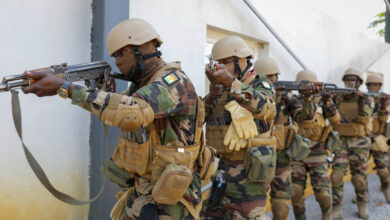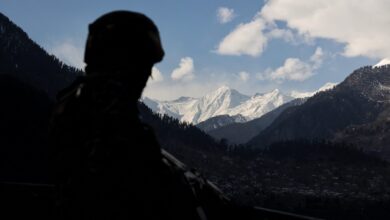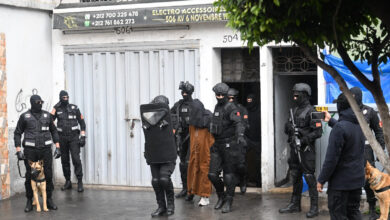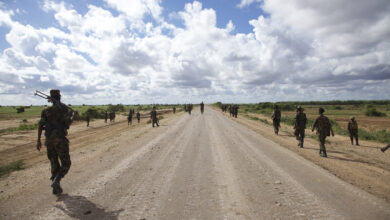The headquarters of the G5 Sahel joint counter-terrorism force has been transferred to Mali’s capital Bamako from the central town of Sevare following a deadly June bomb attack, a source said on Friday, September 28.
The June 29 suicide bomb and gun attack destroyed the Sevare facility, killing two soldiers and a civilian. The attack was reportedly claimed by an official from the Support Group for Islam and Muslims (JNIM), which is linked to al-Qaeda.
In a similar attack in April, militants attacked French and United Nations bases in Timbuktu killing one U.N. peacekeeper and injuring dozens. Rockets were then fired by gunmen wearing blue helmets who had vehicles rigged with bombs, one of which had improvised U.N. markings.
The European Union said in July that it would finance the construction of a new headquarters for the G5 Sahel Joint Force in Mali.
The new commander of the joint force, Mauritanian General Hanena Ould Sidi, was named in July to succeed the Malian General Didier Dacko, and formally took command on September 17.
He is “already working with his team from Bamako,” a source said. “The headquarters of this force should be in a place where communication and links are better.”
The French military also confirmed the move.
The G5 Sahel, comprised of Burkina Faso, Chad, Mali, Mauritania and Niger, was launched in 2014 to improve cooperation on development and security in West Africa.
They launched the G5 Sahel joint counter-terrorism force in July 2017 with a mandate to combat terrorism, transnational organized crime and human trafficking in the Sahel area.
It is set to expand to 5,000 troops, divided into seven battalions: two each from the Mali and Niger, and one from Chad, Burkina Faso and Mauritania. They will deploy along the southern edge of the Sahara desert to work alongside thousands of troops deployed to France’s Operation Barkhane in the wider Sahel and the U.N.’s Minusma peacekeeping mission in Mali.
Around €420 million ($488 million) pledged at an international donors’ conference in Brussels on February 23 has been slow to materialize.
U.N. Secretary General Antonio Guterres has pledged to pursue support for the force, which was projected to be fully up and running in March. It is poorly-equipped and its deployment has faced delays.
Guterres, as well as France, had been lobbying for the force to speed up its work and pushing for U.N. funding, which would be in addition to technical support from Minusma.
But on May 23, the United States said it opposed a Security Council mandate for the force as well as direct U.N. funding.
Speaking at the United Nations General Assembly on Wednesday, Mali President Ibrahim Boubacar Keita said the Joint Force was “struggling to become fully operational, for lack of an adequate mandate and especially appropriate funding.”
“That is why we continue to ask the Security Council to authorize the deployment of this force under Chapter VII of the Charter, with adequate, timely and predictable funding, including through the United Nations, to enable it to carry out its mandate in a sustainable and effective manner,” Keita said.
The recent unrest in Mali began with a 2012 Tuareg separatist uprising against the state, which was exploited by jihadists linked to al-Qaeda who took key cities in the north.
The insurgency gradually spread to the country’s center, where local grievances are sometimes exploited by radical Islamists in a region awash with guns. The groups have morphed into more nimble formations operating in rural areas, sometimes winning over local populations by providing basic services and protection from bandits.
With reporting from AFP












